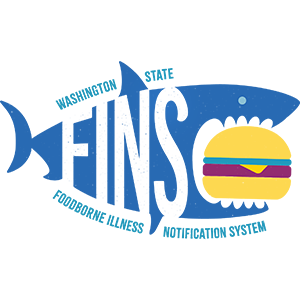Food Safety
Dedicated to communicating the importance of proper food safety – both at home and in public
Contact Us
Overview
Food-related diseases affect tens of millions of people and kill thousands. Tracking single cases of foodborne illness and investigating outbreaks are critical public health functions in which SRHD is deeply involved. Equally important is helping individuals understand how to prevent food from being contaminated as it is produced and prepared.
Basics
What is foodborne illness (disease, infection)?
Many different disease-causing microbes, or pathogens, can contaminate foods, so there are many different foodborne infections. In addition, poisonous chemicals, or other harmful substances can cause foodborne diseases if they are present in food.
You and Your Family―In the Home
Clean: Wash hands and surfaces often
Illness-causing bacteria can survive in many places around your kitchen, including your hands, utensils and cutting boards. Unless you wash your hands, utensils, and surfaces the right way, you could spread bacteria to your food, and your family.
- Wash hands the right way—for 20 seconds with soap and running water
- Wash surfaces and utensils after each use Wash fruits and veggies—but not meat, poultry, or eggs
Separate: Don’t Cross Contaminate
Even after you’ve cleaned your hands and surfaces thoroughly, raw meat, poultry, seafood, and eggs can still spread illness-causing bacteria to ready-to-eat foods—unless you keep them separate.
- Use separate cutting boards and plates for produce and for meat, poultry, seafood, and eggs
- Keep meat, poultry, seafood, and eggs separate from all other foods at the grocery
- Keep meat, poultry, seafood, and eggs separate from all other foods in the fridge
Cook: Cook to the right temperature
Did you know that the bacteria that cause food poisoning multiply quickest in the “Danger Zone” between 40˚ and 140˚ Fahrenheit? And while many people think they can tell when food is “done” simply by checking its color and texture, there’s no way to be sure it’s safe without following a few important but simple steps
- Use a food thermometer
- Keep food hot after cooking (at 140 ˚F or above)
- Microwave food thoroughly (to 165 ˚F)
Chill: Refrigerate Promptly
By refrigerating foods promptly and properly, you can help keep your family safe from food poisoning at home.
Refrigerate perishable foods within two hours
- Never thaw or marinate foods on the counter
See the U.S. Department of Health & Human Services Cold Food Storage Chart
Restaurant Safety
Food Safety Rules
The food vendors in the community, like restaurants, delis, grocery stores, and others, must follow local food safety rules
- Safe source: Food or food ingredients come from a safe source.
- Safe temperature: Food is held at the correct cold or hot holding temperatures.
- Proper cooking: Food is cooked properly, especially foods such as meat, poultry, and pork.
- Proper handling: Food is handled to prevent cross-contamination from the environment (for example, common work areas or common utensils).
- Proper hand washing: Food handlers know how to prevent contamination, especially food handlers who may be sick with vomiting or diarrhea.
Inspections
One of the ways food safety rules protect the public’s health is through food vendor inspections. To learn more about Spokane Regional Health District’s (SRHD’s) Food Safety program, click here.
Food Establishment Enforcement Procedures
Unlike many communities, SRHD does not “grade” its food establishments based on inspection findings. Instead, officials use a sequence of inspections as an establishment progresses through enforcement action, focused mainly on how much potential a infraction has to impact public health. For a summary of these enforcement actions, click here.
When visiting a food establishment, such as your favorite restaurant, or when reviewing its inspection report, these are some of the items to be aware of:
- Unsafe food sources
- Improper hot-holding or cold-holding of food
- Improperly cooked food
- Cross-contamination
- Contamination by sick workers
Symptoms of Foodborne Illness
Different diseases have many different symptoms, so there is no one "symptom" that represents foodborne illness. However, the microbe or toxin enters the body through the gastrointestinal tract, and often causes the first symptoms there, so nausea, vomiting, abdominal cramps and diarrhea are common symptoms in many foodborne diseases.
Foodborne illnesses include:
What are Foodborne Illnesses and How to Report Them
Please report unsafe food handling practices or foodborne illness directly to the Washington State Department of Health.
Spokane Data
Recommendations
Many cases of foodborne illness go unreported. However, it is important to report foodborne illness to public health so that foodborne outbreaks can be identified and stopped as quickly as possible before other people get sick.
If you think a meal from a food establishment made you sick or if you observed unsafe food handling practices at a food establishment, please report the illness or observations directly to the Washington State Department of Health.
Related Facts

Each year, one in six Americans gets sick by consuming contaminated foods or beverages. Source: http://www.cdc.gov/foodsafety/facts.html (CDC)
Preventing Cross Contamination
Time/Temperature Control for Safety Foods
(previously Potentially Hazardous Foods - PHFs)
Cooking Temperatures

Report Unsafe Food Handling or Foodborne Illness
Please report unsafe food handling practices or foodborne illness to the Washington State Department of Health Foodborne Illness Notification System (FINS).

